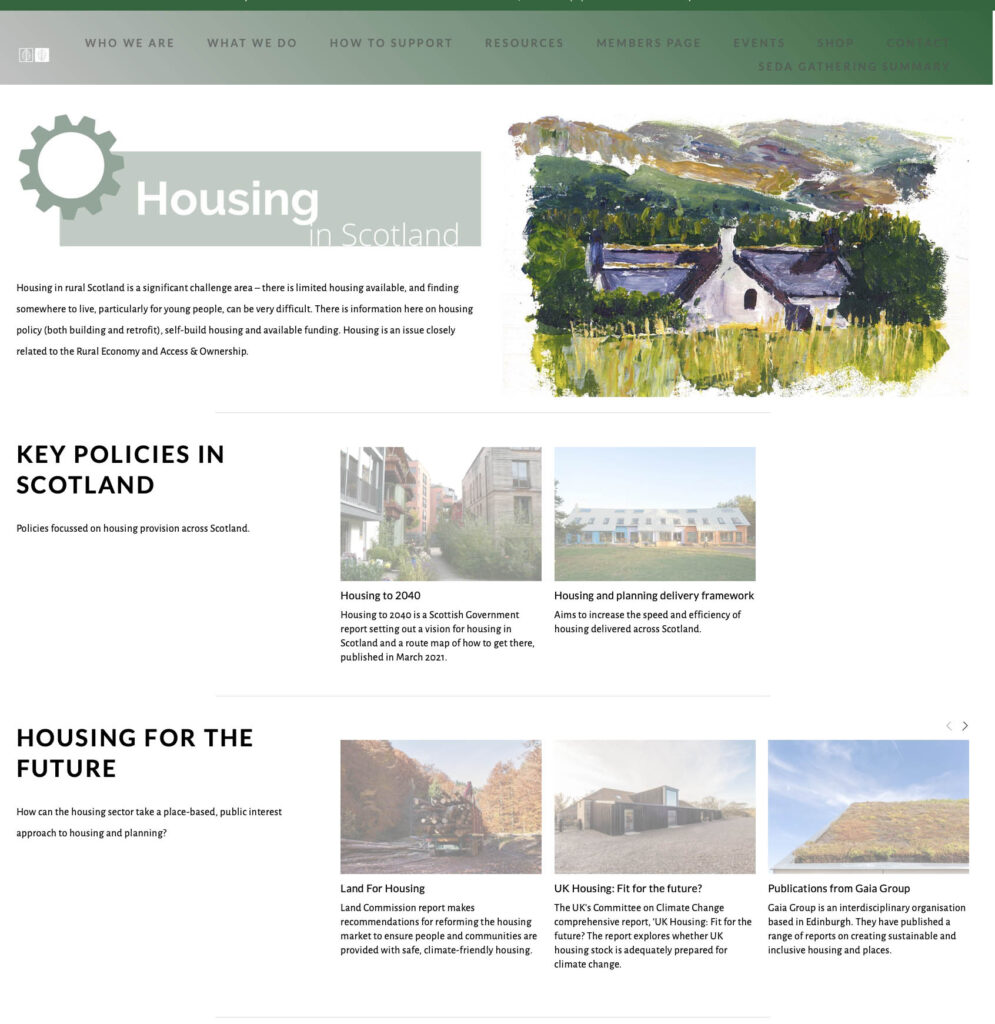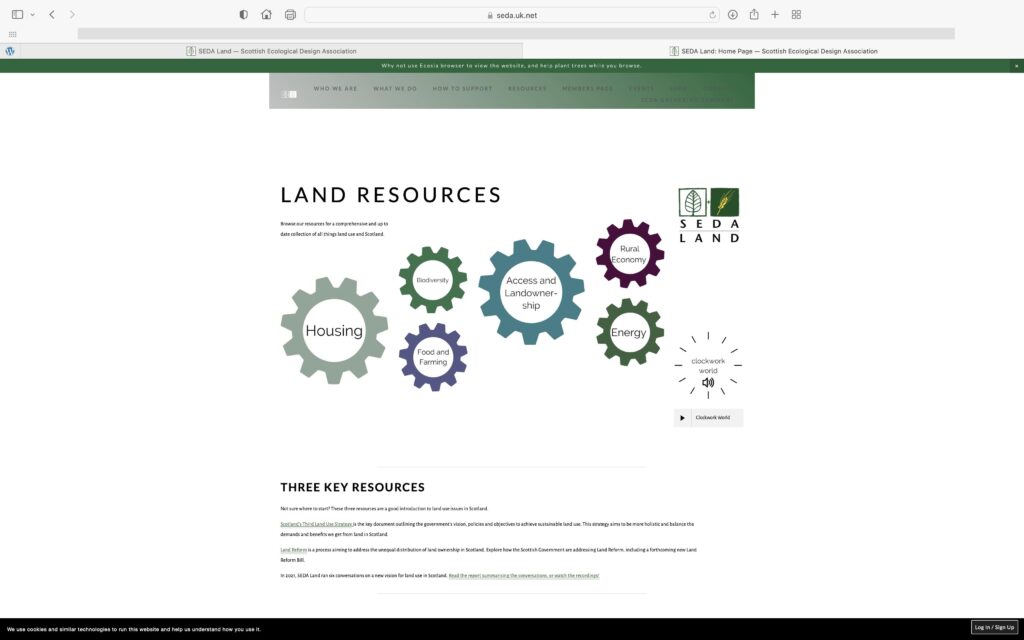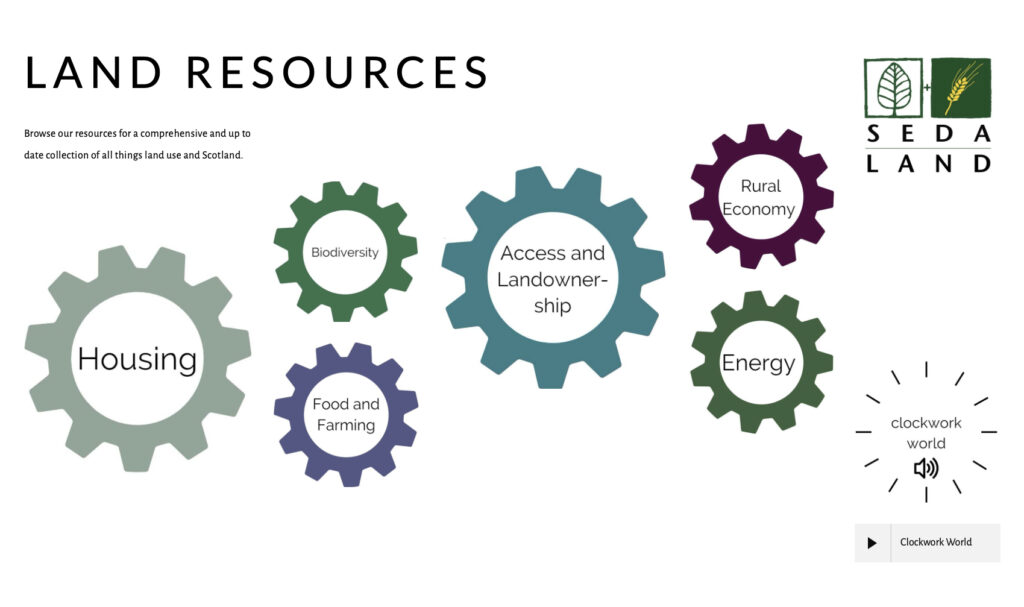Recently, SEDA Land [1] published its Land Resources pages for all to see and use. They can be found on the SEDA Land web site at https://www.seda.uk.net/seda-land-home-page
This is a brief introduction to the pages and why they are needed. They were constructed earlier in the year and went online in December 2022 [2]. You can see what the Intro page looks like from the screenshot below.
They are designed as a repository and source of information on land-related matters in Scotland. They will be updated as new information becomes available.
Six Cogs
The topic areas are written in the middle of the SIX cogs in the image below – Housing, Biodiversity, Food and Farming, Access and Landownership, Rural Economy and Energy. Most likely the structure is not static but will evolve – funding permitted.
Hidden data
One of the great difficulties facing researchers and investigators who do not belong to an organisation such as university or research institute is that most of the scientific papers produced in the world are not easily accessible.
Universities and Institutes pay large subscriptions each year to the major publishers of science and technology. This sub allows access by their employees to published papers, reports and journals. Others can only get access by paying a fee per paper and if you want to look at tens or hundreds of papers, it mounts up to sums most can’t afford.
It’s not easy therefore for members of the public or researchers working independently to keep up with what’s happening.
But it’s not all hidden. There’s an increasing desire by science to publish open-access papers, where a fee is paid by the researchers on publication and the paper then becomes accessible to anyone. There is also a growing bank of summaries, policy papers and major scientific and technical reports that are available to the web free of charge. The UN and EC organisations for example have been very good at this open-source provision, but so have many organsations in Scotland. In fact, many of the links to reports and data on the Living Field site are to this global bank of open data.
But what’s there to get?
Anyone wanting to research a topic is faced with knowing where to begin. There is so much information and data out there that the problem now is knowing what is open-access and what is best for a first read. There is also misinformation. Some guidance may be needed therefore – pointers to sources that are independent, critical and whose work can be challenged and verified. This is where SEDA Land’s Resources web pages will contribute.

On the SEDA Land web site, clicking a cog leads to a separate web page for that topic. The pages give links to relevant open-access documents and also display artwork, music and poetry. The image above shows the upper part of the page on Housing, that below, the whole page on Access and Ownership.
SEDA Land say this is just the beginning.
Links
[1] SEDA Land is part of the Scottish Ecological Design Association. More on the Living field web at: Land Conversations 2021.
[2] The SEDA Land Resources web pages were constructed by Eleanor Fraser and Rosanna Harvey-Crawford with funding from Patrick and Linda Flockhart.
The Living Field Editor’s curvedflatlands web analyses some of the issues raised in the Land Conversations: First Ideas, Land Conversations 2021, Matrix and decision tree, Carbon Tax. Thanks to the SEDA Land initiators for the invitation in 2020 to assist in scoping the Conversations.



